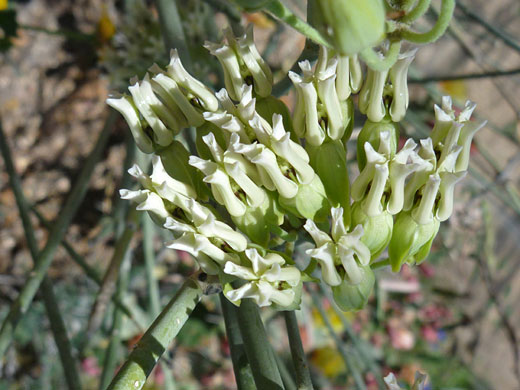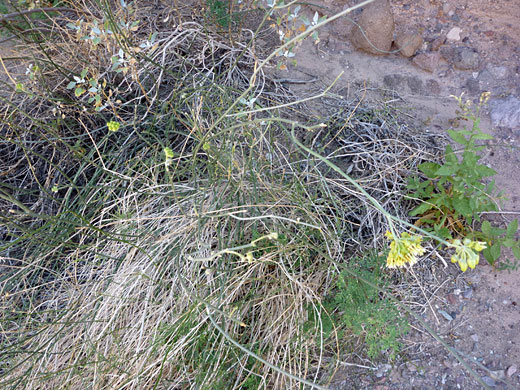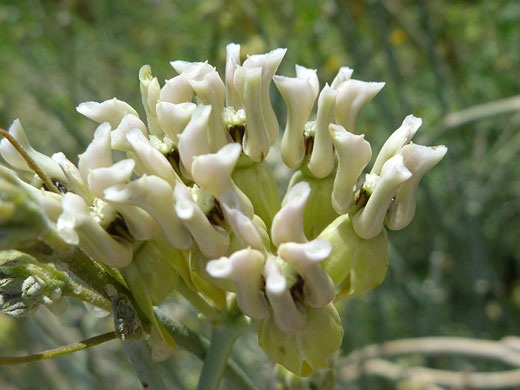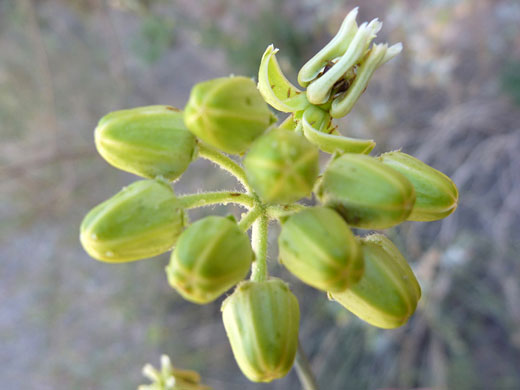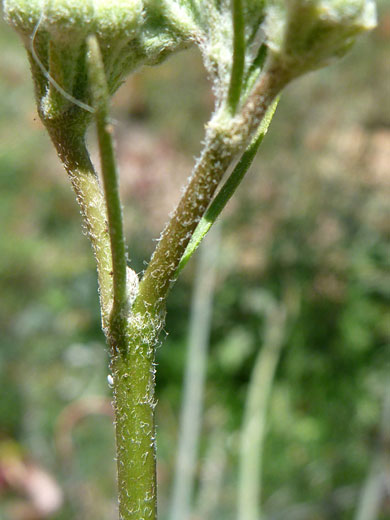Common names:
Rush milkweed, ajamete, skeleton milkweed
Family:
Scientific name:
Asclepias subulata
Main flower color:
Range:
The Mojave and Sonoran deserts
Height:
Between 3 and 5 feet
Habitat:
Desert slopes, washes; partly shaded locations
Leaves:
Narrow, linear, opposite, up to 2 inches long, withered before flowering
Season:
April to December
Asclepias subulata is found in the Sonoran and southern Mojave deserts at low elevations (below 3,000 feet), often partly hidden by other vegetation. The greyish-green stems are long and flexible, and mostly leafless (leaves wither and fall before flowering), branching towards the tip and terminating in spherical clusters of small, yellowish flowers. Stems are usually hairless but may have a sparse covering of straggly white hairs, towards the top and around the buds.
Individual flowers have five narrow, greenish petals, about 3/8 of an inch long, which bend fully backwards when mature, exposing the five-pronged crown; the five projections (hoods) rise above the center, and each contains a tiny horn, also slightly exserted. The dark-colored anthers sit well below the hoods.
Individual flowers have five narrow, greenish petals, about 3/8 of an inch long, which bend fully backwards when mature, exposing the five-pronged crown; the five projections (hoods) rise above the center, and each contains a tiny horn, also slightly exserted. The dark-colored anthers sit well below the hoods.
All Contents © Copyright The American Southwest | Comments and Questions | Contribute | Site Map


